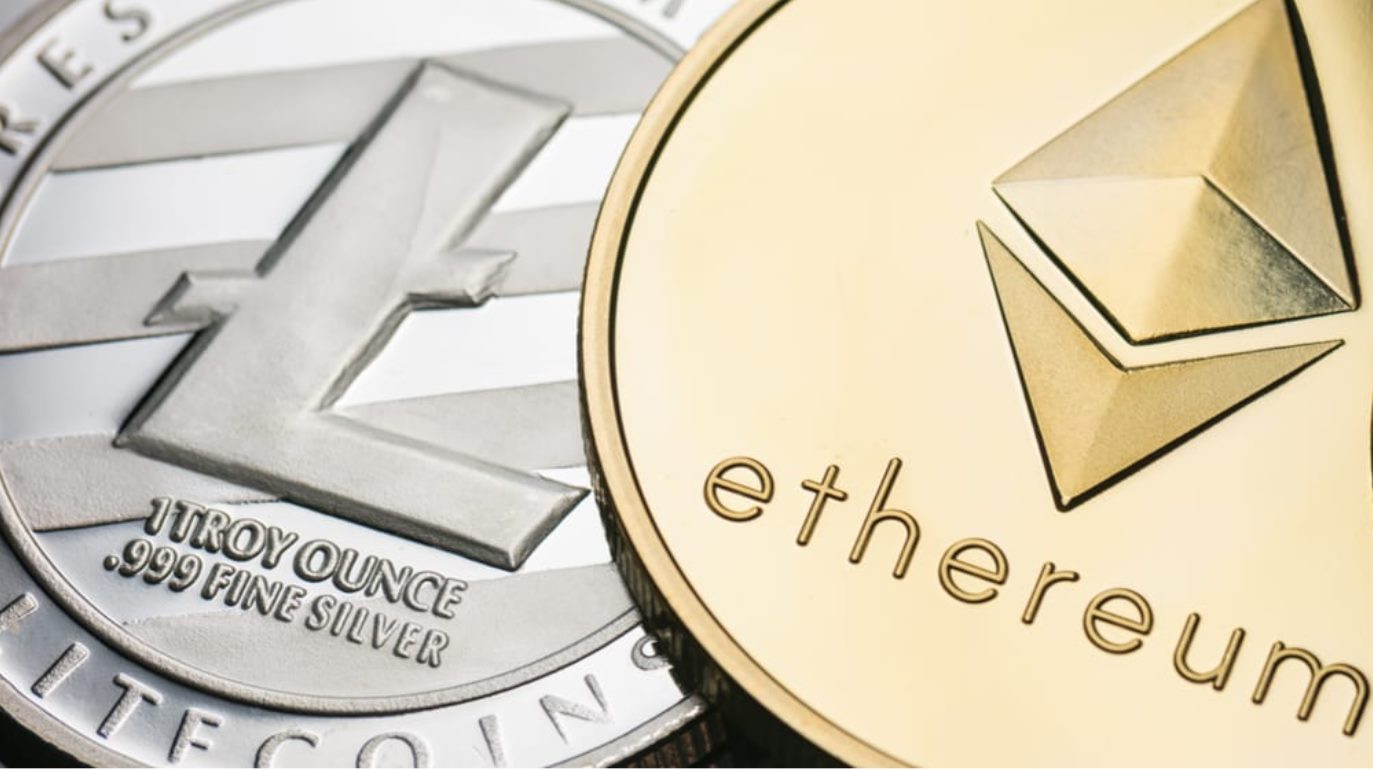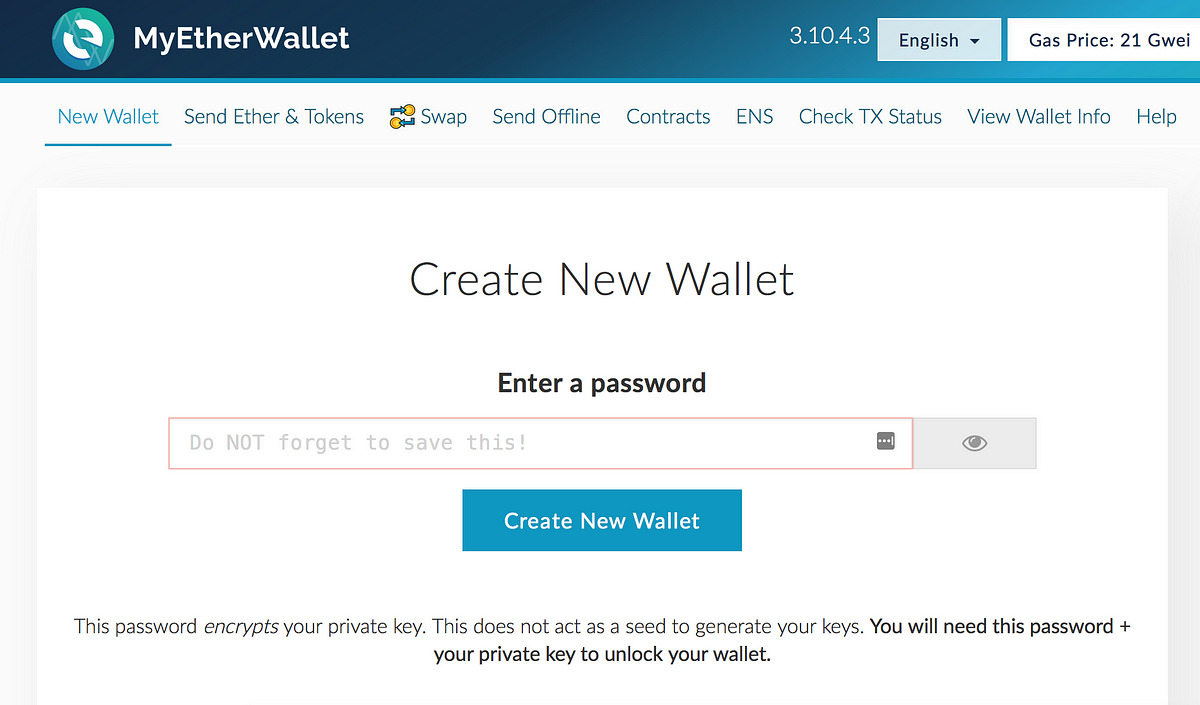Introduction
Welcome to the world of Ethereum, one of the most popular blockchain platforms. If you’re planning to dive into the digital currency realm, understanding Ethereum wallets is essential. In this article, we’ll guide you through the process of creating an Ethereum wallet and explain why it’s crucial for your cryptocurrency endeavors.
But first, let’s briefly unravel the concept of Ethereum. Unlike Bitcoin, Ethereum is not only a digital currency but also a decentralized platform that enables the creation of smart contracts and decentralized applications (DApps). This innovative technology has revolutionized the way people interact and transact on the internet.
Now that you have a basic understanding of Ethereum, it’s time to explore the importance of having an Ethereum wallet. An Ethereum wallet is a digital tool that allows you to store, send, and receive Ether (ETH), the native cryptocurrency of the Ethereum network. Similar to traditional wallets, Ethereum wallets provide you with a secure place to keep your digital assets.
Whether you’re a casual investor, a trader, or someone interested in participating in ICOs (Initial Coin Offerings), having an Ethereum wallet is a necessity. Without a wallet, you won’t have a place to store your Ether and won’t be able to engage in Ethereum-based transactions.
There are various types of Ethereum wallets available, each with its own features and level of security. Before diving into the steps of creating an Ethereum wallet, it’s important to understand the different types so you can choose the most suitable one for your needs.
In the next sections, we will guide you through the entire process of creating and securing your Ethereum wallet. We will also provide important tips on backing up and accessing your wallet. By the end of this guide, you will have all the knowledge and tools necessary to start managing your Ethereum assets with confidence.
What is an Ethereum Wallet?
An Ethereum wallet is a software application or a hardware device that allows you to securely store, send, and receive Ether (ETH) and other Ethereum-based tokens. It acts as a digital vault, keeping your digital assets safe and accessible whenever you need them.
Unlike traditional wallets that hold physical cash, an Ethereum wallet does not store actual coins. Instead, it stores the cryptographic keys, or private keys, that allow you to access your Ether and perform transactions on the Ethereum network.
Every Ethereum wallet has two main components: the public key and the private key. The public key, also known as the wallet address, is the information you share with others to receive Ether. Think of it as your bank account number. On the other hand, the private key is a secret passphrase that allows you to access and manage your Ethereum funds. It’s like your ATM PIN code – something you keep confidential and never share with anyone.
There are several types of Ethereum wallets, each offering a different level of security and convenience:
- Desktop Wallets: These wallets are software applications that you install on your computer. They give you full control over your private keys and offer a high level of security. Examples include Ethereum Mist, MyEtherWallet, and Exodus.
- Mobile Wallets: Mobile wallets are applications that you can install on your smartphone or tablet. They offer convenience and portability, allowing you to access your Ether on the go. Popular mobile wallets include Trust Wallet, Coinbase Wallet, and Jaxx.
- Web Wallets: Web wallets are online platforms that allow you to manage your Ethereum funds through a web browser. They are accessible from any device with an internet connection. However, be cautious with web wallets as they may be more vulnerable to hacking attempts. MyEtherWallet and MetaMask are examples of web wallets.
- Hardware Wallets: Hardware wallets are physical devices designed specifically for storing cryptocurrencies. They offer the highest level of security as they store your private keys offline. Ledger Nano S and Trezor are popular choices for Ethereum hardware wallets.
Each type of wallet has its own advantages and considerations. It’s important to assess your needs, level of technical expertise, and security requirements before choosing the right Ethereum wallet for you.
In the next section, we will explore why having an Ethereum wallet is essential for your cryptocurrency journey and the various use cases it enables.
Why Do I Need an Ethereum Wallet?
Having an Ethereum wallet is essential for anyone looking to engage with the Ethereum network and participate in the world of digital currencies. Here are some compelling reasons why you need an Ethereum wallet:
Securely store your Ether: An Ethereum wallet provides you with a secure digital vault to store your Ether and other Ethereum-based tokens. By keeping your funds in a wallet, you have control over your private keys, reducing the risk of theft or unauthorized access.
Send and receive Ether: With an Ethereum wallet, you can easily send and receive Ether to and from other wallet addresses. Whether you need to pay for goods and services, transfer funds to friends or family, or receive payments, an Ethereum wallet makes these transactions quick and straightforward.
Participate in ICOs: Initial Coin Offerings (ICOs) are fundraising events conducted on the Ethereum network. Many new projects and startups offer tokens through ICOs as a way to raise capital. To participate in an ICO and receive new tokens, you often need to have an Ethereum wallet and provide the wallet address for distribution.
Interact with decentralized applications (DApps): Ethereum is not only a digital currency but also a platform for building decentralized applications (DApps). These DApps run on the Ethereum network and require interaction with an Ethereum wallet for tasks such as signing transactions, accessing tokens, and storing user data. Having a wallet enables you to explore and use a wide range of innovative DApps.
Earn interest and rewards: Some Ethereum wallets offer features that allow you to earn interest on your Ether or participate in decentralized finance (DeFi) applications. Through lending, staking, or yield farming, you can make your Ether work for you and potentially generate passive income.
Control your financial sovereignty: Owning an Ethereum wallet gives you full control over your funds and financial activities. You are not relying on third-party financial institutions or intermediaries, thus eliminating the need to trust others with your money. In the world of decentralized finance, having control over your finances is a fundamental principle.
By now, you should have a clear understanding of why having an Ethereum wallet is crucial. In the next section, we will explore the different types of Ethereum wallets available and help you choose the one that suits your needs.
Types of Ethereum Wallets
When it comes to Ethereum wallets, there are various types to choose from. Each type offers different features, levels of security, and convenience. Let’s explore some of the most common types:
- Desktop Wallets: Desktop wallets are software applications that you download and install on your computer. They provide you with full control over your private keys and offer a high level of security since your keys are stored locally. Desktop wallets like Ethereum Mist, MyEtherWallet, and Exodus are popular choices for Ethereum enthusiasts who prioritize security and privacy.
- Mobile Wallets: Mobile wallets are applications that you install on your smartphone or tablet. They offer convenience and portability, allowing you to manage your Ethereum funds on the go. Mobile wallets like Trust Wallet, Coinbase Wallet, and Jaxx are easy to use and often integrate with other popular decentralized applications (DApps).
- Web Wallets: Web wallets are online platforms that you access through a web browser. They provide you with easy accessibility from any device with an internet connection, but remember that they may be more susceptible to security risks. MyEtherWallet and MetaMask are popular web wallets that allow you to manage your Ethereum funds conveniently.
- Hardware Wallets: Hardware wallets are physical devices designed specifically for storing cryptocurrencies. They offer the highest level of security as they keep your private keys offline, away from potential online threats. Popular choices for Ethereum hardware wallets include Ledger Nano S and Trezor. These devices are particularly recommended for users with substantial amounts of Ether or those who value enhanced security measures.
- Paper Wallets: Paper wallets are a form of cold storage where you print your Ethereum wallet’s public and private keys on a physical piece of paper. Since paper wallets are kept physically offline, they provide enhanced security against digital threats. However, it’s crucial to ensure the safekeeping and proper handling of paper wallets to prevent loss or unauthorized access to the keys.
- Browser Extensions: Browser extensions, like MetaMask, are Ethereum wallets that operate as add-ons to web browsers. They provide ease of use and seamless integration with various DApps, allowing for a smooth user experience when interacting with decentralized applications on the Ethereum network.
It’s important to consider factors such as security, convenience, and your specific needs when choosing an Ethereum wallet. Some wallets offer additional features like integration with decentralized exchanges or staking opportunities. Take the time to research and evaluate the options available to find the wallet that best suits your requirements.
Now that you have an overview of the different types of Ethereum wallets, let’s move on to the steps involved in creating your own Ethereum wallet.
Step 1: Choosing a Wallet Provider
When it comes to choosing an Ethereum wallet, selecting a reliable and trusted wallet provider is essential. The provider you choose will determine the security, user experience, and features available to you. Here are some factors to consider when choosing a wallet provider:
Reputation and Trustworthiness: Look for wallet providers with a strong reputation and positive user reviews. Trustworthiness is crucial when it comes to safeguarding your digital assets. Research the company behind the wallet and ensure they have a track record of security and reliability.
Security Features: Check whether the wallet provider offers robust security measures, such as two-factor authentication (2FA), encryption, and backup options. Look for wallets that give you full control over your private keys, as this ensures that you have sole access to your funds.
User Interface and Experience: Consider the user interface and experience of the wallet provider. A user-friendly interface makes it easier to manage your funds and navigate through the wallet’s features. Test out the provider’s demo or try out a trial version if available to get a feel for the wallet’s usability.
Supported Platforms: Ensure that the wallet provider supports the platform you intend to use, whether it’s desktop, mobile, or web-based. Compatibility with your preferred operating system and devices is crucial to ensure a seamless experience.
Additional Features: Some wallet providers offer additional features like integration with decentralized exchanges, token swaps, staking, or support for specific Ethereum-based tokens. Consider your specific needs and whether the wallet provider offers these features if they are important to you.
Popular Ethereum wallet providers include MetaMask, MyEtherWallet, Trust Wallet, and Exodus. These providers have established themselves as reliable and secure options in the Ethereum ecosystem.
Once you have chosen a wallet provider that meets your criteria, you are ready to move on to the next step: creating your Ethereum wallet. In the upcoming section, we will guide you through the process of setting up your wallet and securing it to protect your digital assets.
Step 2: Creating Your Wallet
Creating an Ethereum wallet is a straightforward process that typically involves the following steps:
Step 1: Visit the website or download the software/application of your chosen wallet provider.
Step 2: Click on the option to “Create New Wallet” or a similar prompt.
Step 3: Follow the instructions provided by the wallet provider to generate your wallet. This usually involves setting a strong password and agreeing to the terms and conditions.
Step 4: After creating a password, the wallet will generate your unique recovery phrase or mnemonic phrase. This phrase is crucial for recovering access to your wallet in case you forget your password or lose your device. Write down this phrase and keep it in a safe and secure location.
Step 5: Confirm and verify your recovery phrase when prompted by the wallet provider. This step ensures that you have correctly written down and can recall your recovery phrase in the future.
Step 6: Once your wallet is created, you will be provided with your Ethereum wallet address (public key). This address is what you’ll share with others to receive Ether or other Ethereum-based tokens.
It’s important to note that during the wallet creation process, you should never share your recovery phrase or private keys with anyone. Keep this information confidential to maintain the security of your wallet.
Remember to double-check the website or software you are using to create your wallet. Scammers may create fake websites or software that mimic legitimate wallet providers to steal your information. Always verify the authenticity of the website or software before proceeding.
Once you have successfully created your Ethereum wallet, you are ready to move on to the next step: securing your wallet. In the following section, we will provide essential tips to ensure the safety of your digital assets stored in your Ethereum wallet.
Step 3: Securing Your Wallet
After creating your Ethereum wallet, it’s crucial to take steps to ensure the security of your digital assets. Here are some important measures to secure your wallet:
Strong Password: Set a strong, unique password for your wallet. Use a combination of uppercase and lowercase letters, numbers, and special characters. Avoid using easily guessable passwords or reusing passwords from other accounts.
Enable Two-Factor Authentication (2FA): Activate two-factor authentication for an extra layer of security. This typically involves linking your wallet to an authentication app or receiving SMS codes to verify your identity whenever you log in or perform sensitive actions.
Keep Your Software Updated: Ensure that your wallet software or application is up to date. Wallet providers regularly release updates that address security vulnerabilities. Keep an eye out for any notifications or prompts to update your wallet software.
Beware of Phishing Attacks: Be vigilant against phishing attacks, where scammers try to trick you into revealing your private keys or recovery phrase. Double-check URLs, don’t click on suspicious links, and never share your private information with anyone.
Backup Your Wallet: Regularly back up your wallet by securely storing your recovery phrase offline. This ensures that you can restore access to your wallet if you forget your password or experience any device failures. Store the backup in a safe and secure location, away from potential physical or digital threats.
Use Hardware Wallets: Consider using a hardware wallet, such as Ledger Nano S or Trezor, for an added layer of security. Hardware wallets store your private keys offline and protect against online threats like malware and phishing attacks.
Keep Your Device Secure: Protect your device with strong passwords or biometric authentication. Use reputable antivirus and antimalware software to safeguard against potential threats. Avoid using public Wi-Fi networks or insecure computers when accessing your wallet.
Test with Small Amounts: When making transactions or trying out new features, start with small amounts of Ether to minimize potential losses in case of errors or security breaches. Once you are familiar and confident with the process, you can proceed with larger transactions.
Remember, securing your Ethereum wallet is an ongoing process. Stay informed about the latest security practices and regularly review and update your security measures to protect your digital assets.
In the next section, we will discuss the importance of backing up your Ethereum wallet and provide guidance on how to do it effectively.
Step 4: Backing Up Your Wallet
Backing up your Ethereum wallet is a critical step to ensure that you can always regain access to your funds in case of unexpected events or device failures. Here’s how you can effectively back up your Ethereum wallet:
Recovery Phrase/Mnemonic: Most Ethereum wallets generate a recovery phrase or mnemonic consisting of a series of words. Write down this recovery phrase on a piece of paper or engrave it on a durable material. Make multiple copies and store them in separate secure locations, such as a safe deposit box or a fireproof safe. Avoid taking digital or online backups of your recovery phrase to minimize the risk of unauthorized access.
Test Your Backup: Before relying on your backup, it’s crucial to test its effectiveness. Restore your wallet using the recovery phrase on a different device or a wallet software restoration tool. Ensure that you can successfully recover your wallet and access your funds using the backup. If any issues arise during the restoration process, review your backup procedure and make necessary adjustments.
Keep Backup Up to Date: Regularly update your backups to reflect any changes in your wallet, such as adding new accounts or making important transactions. This ensures that your backup remains synchronized with your actual wallet and eliminates the risk of losing access to recent transactions or account modifications.
Consider Additional Backup Options: In addition to the recovery phrase, some wallets offer alternative backup options, such as encrypted digital backups or hardware devices specifically designed for securely storing wallet backups. Explore these options and consider using them as an additional layer of backup for added security.
Secure Physical Storage: Safely store your physical backup in a location that is secure from theft, fire, water damage, or other potential hazards. Consider using a tamper-evident envelope or a sealed container to ensure the integrity of your backup. Regularly reassess the security of your backup storage and make any necessary adjustments to keep it protected.
Backing up your Ethereum wallet is crucial to safeguarding your funds and ensuring that you have a way to recover access to your assets. By following these backup best practices, you can have peace of mind knowing that your funds are protected even in unforeseen circumstances.
Next, we will discuss how to access your Ethereum wallet, so you can conveniently manage your funds and engage in Ethereum-based transactions.
Step 5: Accessing Your Wallet
Once you have created and secured your Ethereum wallet, you need to know how to access it whenever you want to manage your funds or perform transactions. Here are the steps to access your Ethereum wallet:
Desktop Wallets: If you are using a desktop wallet, open the wallet software on your computer. Enter your password or any required login credentials to gain access to your wallet. Once logged in, you will be able to view your account balance, transaction history, and perform various operations within the wallet.
Mobile Wallets: For mobile wallets, locate the wallet app on your device and open it. Enter your password or any necessary authentication information to log in to your wallet. Once logged in, you can easily navigate through the app to manage your funds, send and receive Ether, and explore additional features offered by the wallet provider.
Web Wallets: If you are using a web wallet, open your preferred web browser and visit the website of your wallet provider. Look for the option to log in or access your wallet. Enter your login credentials, such as your email address or username, and password. After successful login, you will have access to your wallet and its features through your web browser.
Hardware Wallets: To access your Ethereum wallet with a hardware wallet, connect the device to your computer or mobile device using the provided USB cable or Bluetooth. Follow the instructions provided by the hardware wallet manufacturer to authenticate your identity and gain access to your wallet. The hardware wallet will provide a secure environment for managing your funds and signing transactions.
Browser Extensions: If you are using a browser extension wallet, such as MetaMask, open your web browser and check for the wallet icon in the browser toolbar. Click on the icon to open the wallet extension. Depending on the wallet, you may need to enter your password or provide any necessary login credentials. Once logged in, you will be able to access your wallet and interact with decentralized applications directly through your browser.
Remember to keep your login credentials, passwords, or any other authentication factors confidential. Never share them with anyone, and remain cautious when logging in to your wallet on public or shared devices.
Additionally, consider setting up additional security measures, such as two-factor authentication (2FA), on your wallet for added protection.
Congratulations! You have successfully learned how to access your Ethereum wallet. Now you can confidently manage your funds, send and receive Ether, and explore the exciting world of Ethereum-based applications and services.
In the final section, we will provide a recap and offer closing thoughts on the importance of Ethereum wallets.
Conclusion
Creating and securing an Ethereum wallet is an essential step for anyone looking to engage in the world of cryptocurrencies. By following the steps outlined in this guide, you have learned how to choose a wallet provider, create your wallet, secure it, back it up, and access it when needed.
An Ethereum wallet is not just a tool for storing and managing Ether; it is your gateway to the decentralized world of Ethereum. It allows you to participate in ICOs, interact with decentralized applications (DApps), and take control of your financial sovereignty.
When choosing a wallet provider, prioritize security, reputation, and user experience. Take the time to research and select a provider that aligns with your needs and offers the necessary features for your Ethereum journey.
Once your wallet is created, remember to adhere to security best practices, such as using strong passwords, enabling two-factor authentication, and keeping your software up to date. Regularly back up your wallet and store your recovery phrase or mnemonic securely and offline.
When accessing your wallet, use trusted devices and take precautions to prevent unauthorized access to your funds. Be mindful of phishing attempts and always verify the authenticity of the website or software you are using.
By following these steps and best practices, you can confidently manage your Ethereum funds, explore decentralized applications, and safeguard your digital assets.
Remember, the world of cryptocurrencies is ever-evolving, and staying informed about the latest security measures is crucial. Maintain a proactive approach to security and regularly review and update your wallet’s security settings to adapt to the changing landscape.
Now that you have the knowledge and tools to create and secure your Ethereum wallet, you are ready to embark on your cryptocurrency journey with confidence. Enjoy the world of Ethereum and make the most of the opportunities it presents!

























